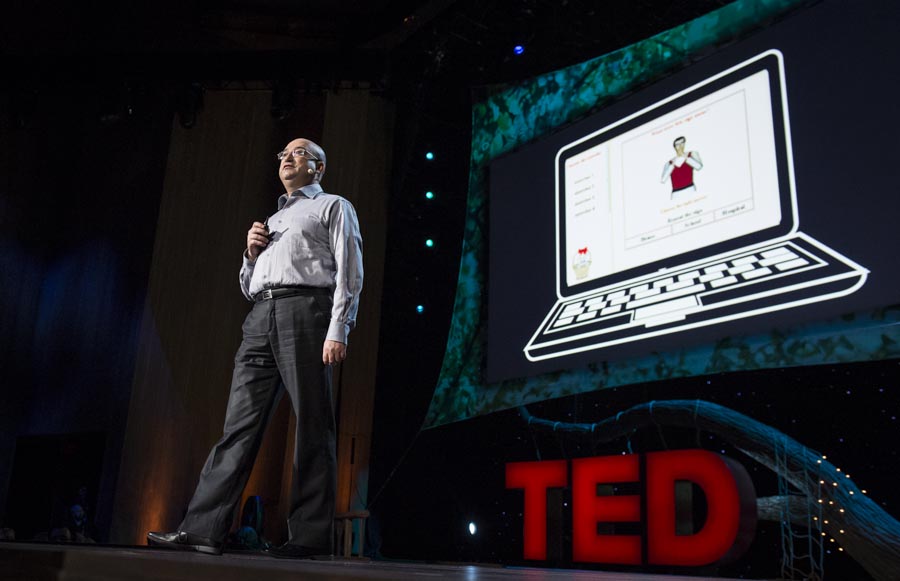
Photo: James Duncan Davidson
“80% of deaf people in the world,” says Mohamed Jemni, “do not have access to education.” Jemni, professor of ICT and Educational Technologies at the University of Tunis, Tunisia, is working with new technology to find ways of helping the deaf to communicate. His team has developed WebSign, an extraordinary set of applications, to “break the silence of deaf.”
The first example he shows is a piece of software that can do automatic translation of text into sign. When someone types, an avatar on screen translates. It’s striking both how simple it seems, and that no one had done it before.
But it’s not simple. To make it work, they need a large dictionary of signs. That could have been an enormous task, taking vase resources. However, they have developed a very simple interface to create signs without special skills, setting the configuration of the hands, and the facial expressions (a crucial component of sign language). Any user can do this. Using this interface they can us volunteer resources to create this dictionary. In fact, they need dictionaries, not just one, since sign language is not universal — there are many, many variants.
They have also developed other applications.
- One interface is designed to help people in learning and teaching sign language. They produce multimedia content, and the avatar appears to teach the language.
- A crucial piece of communicating in the modern world is mobile phones. Their software can auto-translate MMS messages, enabling communication, even for those who are illiterate in the written language.
- Consider announcement services. What happens if you are deaf and riding a train, and a crucial announcement is played on the public address system? What could you do? Well, his application can diffuse the message via MMS to local phones, which can translate it into sign.
He’s developed all these applications to improve the life of people with disabilities. Jemni believes that, “The disability is not the problem, the accessibility is the problem.” He wants to disseminate this technology is everywhere, and is looking to share it with anyone, “who wants to contribute to breaking the silence of deaf.”
Comments (6)
Pingback: 40 Best Inspirational Quotes About Disability Inclusion - Dealing With Disability
Pingback: Sector verdieping leeswijzer – eva van der kroft
Pingback: Deaf and hard of hearing – the role of education – Sweden 2019
Pingback: egit Kalpa Pharmaceuticals Supplier
Pingback: Wizmo Blog » Blog Archive » Breaking the silence of deafness: Mohamed Jemni at TED2013